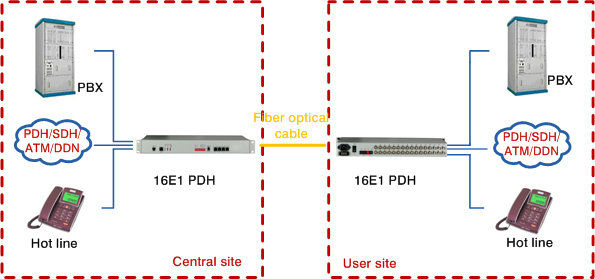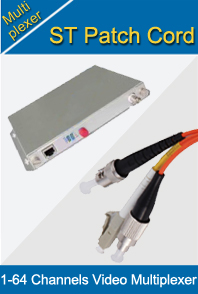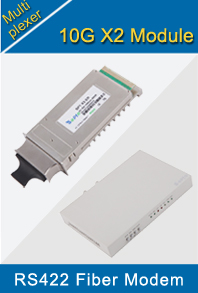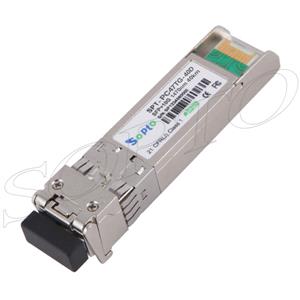-

- Sopto Home
-

- Special Topic
-

- Multiplexer Knowledge
-

- Info about WDM System Technology
Multiplexer Knowledge
- Why is Multiplexing Needed in Data Communication Systems?
- What is Concept of Multiplexing in Telephone System?
- What is Digital TV Frequency?
- Outlook of the WDM Networks
- DWDM Technical Overview
- CWDM Technical Overview
- How to Activate Cable Modems?
- How to Install a Fiber Optic Modem?
- How do I Choose a Best Fiber Modem?
SOPTO Special Topic
Certificate



Guarantee
Except products belongs to Bargain Shop section, all products are warranted by SOPTO only to purchasers for resale or for use in business or original equipment manufacturer, against defects in workmanship or materials under normal use (consumables, normal tear and wear excluded) for one year after date of purchase from SOPTO, unless otherwise stated...
Return Policies
Defective products will be accepted for exchange, at our discretion, within 14 days from receipt. Buyer might be requested to return the defective products to SOPTO for verification or authorized service location, as SOPTO designated, shipping costs prepaid. .....
Applications
Multiplexers can be used to connect PBX, Hot line and other devices of network from central site to user site through fiber optical cable.
SOPTO Products
- Fiber Optic Transceiver Module
- High Speed Cable
- Fiber Optical Cable
- Fiber Optical Patch Cords
- Splitter CWDM DWDM
- PON Solution
- FTTH Box ODF Closure
- PCI-E Network Card
- Network Cables
- Fiber Optical Adapter
- Fiber Optical Attenuator
- Fiber Media Converter
- PDH Multiplexers
- Protocol Converter
- Digital Video Multiplexer
- Fiber Optical Tools
- Compatible
Related Products
Performance Feature
High integration desig
Low power consumption
Good EMC, EMI
Stable and Reliable
Multiplexer Knowledge
Recommended


Info about WDM System Technology
Most WDM systems operate on single-mode fiber optical cables, which have a core diameter of 9 µm. Certain forms of WDM may also be used in multi-mode fiber cables (also referred to as premises cables) which have core diameters of fifty or 62.5 µm.
Early WDM systems were expensive and complicated to operate. However, recent standardization and better understanding of the dynamics of WDM systems make WDM less expensive to deploy.
Optical receivers, as opposed to laser sources, tend to be wideband devices. Therefore the demultiplexer must provide the wavelength selectivity of the receiver in the WDM system.

WDM systems are split into different wavelength patterns, conventional/coarse (CWDM) and dense (DWDM). Conventional WDM systems provide up to 8 channels within the 3rd transmission window (C-Band) of silica fibers around 1550 nm. Dense wavelength division multiplexing (DWDM) uses the same transmission window but with denser channel spacing. Channel plans vary, but a typical system would use 40 channels at 100 GHz spacing or 80 channels with 50 GHz spacing. Some technologies are capable of 12.5 GHz spacing (sometimes called ultra-dense WDM). Such spacing’s are today only achieved by free-space optics technology. New amplification options (Raman amplification) enable the extension of the usable wavelengths towards the L-band, pretty much doubling these numbers.
Coarse wavelength division multiplexing (CWDM) in contrast to conventional WDM and DWDM uses increased channel spacing to allow less sophisticated and thus cheaper transceiver designs. To supply 8 channels on one fiber CWDM uses the whole frequency band between second and third transmission window (1310/1550 nm respectively) including both windows (minimum dispersion window and minimum attenuation window) but the critical area where OH scattering may occur, recommending using OH-free silica fibers in case the wavelengths between second and third transmission window ought to be used. Avoiding this region, the channels 47, 49, 51, 53, 55, 57, 59, 61 remain and these are the most commonly used. Each WDM Optical MUX includes its optical insertion loss and isolation measures of every branch. WDMs are available in several fiber sizes and kinds (250µm fiber, loose tube, 900µm buffer, Ø 3mm cable, simplex fiber optic cable or duplex fiber cable).

WDM, DWDM and CWDM are based on the same idea of using multiple wavelengths of sunshine on one fiber, but differ within the spacing of the wavelengths, quantity of channels, and also the capability to amplify the multiplexed signals within the optical space. EDFA provide efficient wideband amplification for that C-band, Raman amplification adds a mechanism for amplification in the L-band. For CWDM wideband optical amplification is not available, limiting the optical spans to many tens of kilometers.
Regardless if you are WDM Optical MUX expert or it is your first experience with optical networking technologies, Sopto’s products and services are equipped for simplicity of use and operation across all applications. If you want to choose some fiber optic cable to connect the WDM, you are able to make reference to our fiber optic cable specifications. Have any question; please contact a Sopto representative by calling 86-755-36946668, or by sending an email to info@sopto.com.



